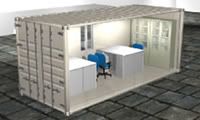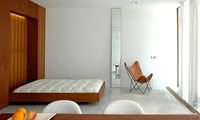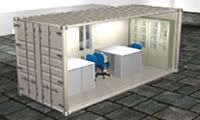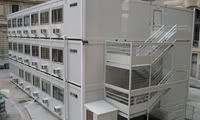Nomadic Museum
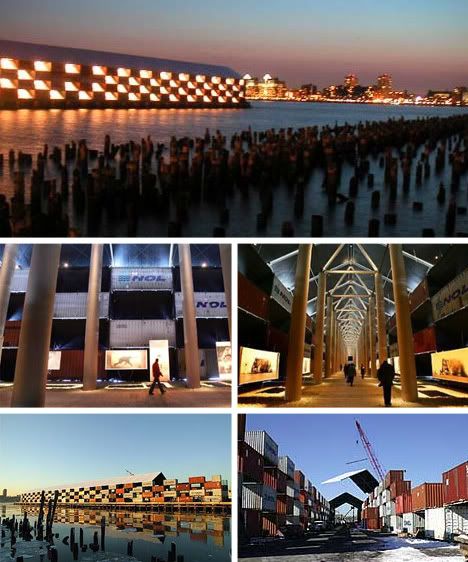
Used Container Specifications
20' HC Dry Cargo Container
Specifications:
1) External dimensions (L x W x H): 6,096 x 2,438 x 2,596mm
2) Internal dimensions (L x W x H): 5,915 x 2,422 x 2,689mm
3) Door opening dimensions (W x H): 2,340 x 2,585mm
4) Cubic capacity: 38.5cbm
5) Ratings:
a) Max. gross weight (R): 32,000kg
b) Tare weight (design) (T): 2,550kg
c) Max. payload (P): 29,450kg
20' HC Dry Bulk Container
Specifications:
1) External dimensions (L x W x H): 6,096 x 2,438 x 2,896mm
2) Internal dimensions (L x W x H): 5,915 x 2,422 x 2,689mm
3) Door opening dimensions (W x H): 2,400 x 2,613mm
4) Cubic capacity: 38.5cbm
5) Ratings:
a) Max. gross weight (R): 32,000kg
b) Tare weight (design) (T): 2,550kg
c) Max. payload (P): 29,450kg
20' HC Multi-Door Container
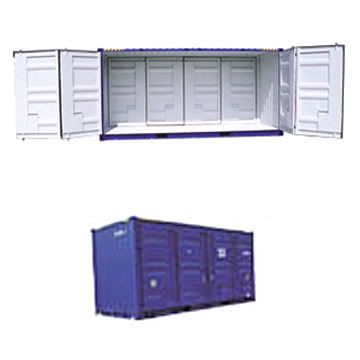 Specifications:
Specifications: 1) External dimensions (L x W x H): 6,096 x 2,438 x 2,896mm
2) Internal dimensions (L x W x H): 5,915 x 2,422 x 2,689mm
3) Door opening dimensions (W x H): 5,702 x 2,570mm
4) Cubic capacity: 38.5cbm
5) Ratings:
a) Max. gross weight (R): 32,000kg
b) Tare weight (design) (T): 2,550kg
c) Max. payload (P): 29,450kg
20' GP One Side Full Access Container
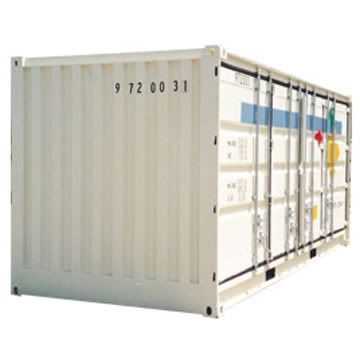 Specifications:
Specifications:1) External dimensions (L x W x H): 6,096 x 2,438 x 2,591mm
2) Internal dimensions (L x W x H): 5,154 x 2,281 x 2,240mm
3) Door opening dimensions (W x H): 5,940 x 2,134mm
4) Cubic capacity: 30.4cbm
5) Ratings:
a) Max. gross weight (R): 24,000kg
b) Tare weight (design) (T): 3,150kg
c) Max. payload (P): 20,850kg
40' HC Over-Wide Container
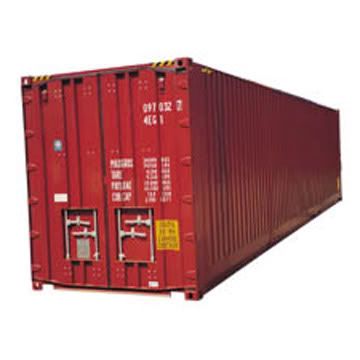
Specifications:
1) External dimensions (L x W x H): 12,192 x 2,462 x 2,896 mm
2) Internal dimensions (L x W x H): 12,095 x 2,422 x 2,692mm
3) Door opening dimensions (W x H): 2,400 x 2,584mm
4) Cubic capacity: 78.9cbm
5) Ratings:
a) Max. gross weight (R): 34,000kg
b) Tare weight (design) (T): 4,200kg
c) Max. payload (P): 29,800kg
20' Open Top (Soft Top or Hard Top) Container
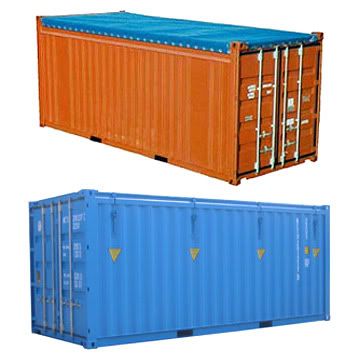
Specifications:
1) External dimensions (L x W x H): 6,096 x 2,438 x 2,591mm
2) Internal dimensions (L x W x H): 5,915 x 2,422 x 2,389mm
3) Door opening dimensions (W x H): 2,338 x 2,280mm
4) Cubic capacity: 30.8cbm
5) Ratings:
a) Max. gross weight (R): 27,000kg / 27,500kg
b) Tare weight (design) (T): 2,300kg / 2,350kg
c) Max. payload (P): 24,000kg
Trunk Room Container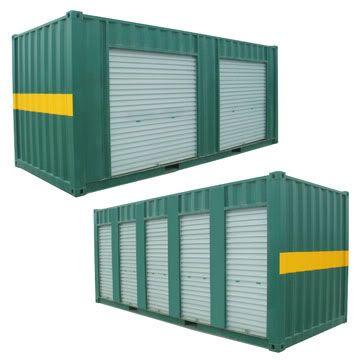
1) External dimensions:
a) Length: 4,012mm, 13' - 1-15/16
b) Width: 2,240mm, 7' - 4-3/16
c) Height: 2,100mm, 6' - 10-21/32
2) Internal dimensions:
a) Length: 3,830mm, 12\'\' - 6-15/16
b) Width: 2,146mm, 7\'\' - 1/2
c) Height: 1,892mm, 6\'\' - 2-1/2
10', 8' and 6' Dry Cargo Container
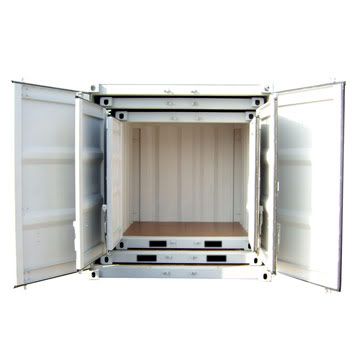 Specifications :
Specifications :1) External dimensions:
a) Length: 2,991mm / 2,438mm / 1,829mm
b) Width: 2,438mm / 2,200mm / 1,960mm
c) Height: 2,591mm / 2,260mm / 1,920mm
2) Internal dimensions:
a) Length: 2,831mm / 2,278mm / 1,678mm
b) Width: 2,350mm / 2,112mm / 1,872mm
c) Height: 2,390mm / 2,059mm / 1,734mm
3) Door opening dimensions:
a) Width 2,338mm / 2,100mm / 1,866mm
b) Height 2,280mm / 1,949mm / 1,622mm
c) Cubic capacity: 15.9cbm / 9.9cbm / 5.44cbm
4) Ratings:
a) Max. gross weight (r): 10,160kg / 6,000kg / 5,000kg
b) Tare weight (design) (t): 1,200kg / 950kg / 600kg
c) Max. payload (p): 8,960kg / 5,050kg / 4,400kg
20' Car Carrying Container
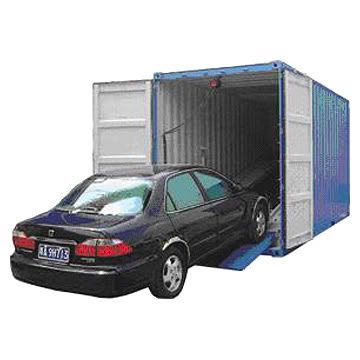
Specifications:
1) An upper deck fitted inside a basic body of a dry-cargo container suitable for all kinds of sedans
2) Carrying two cars in one container
3) To be used in Chinese domestic railage, special for the transportation of a little batch vehicles
Building with Shipping Containers

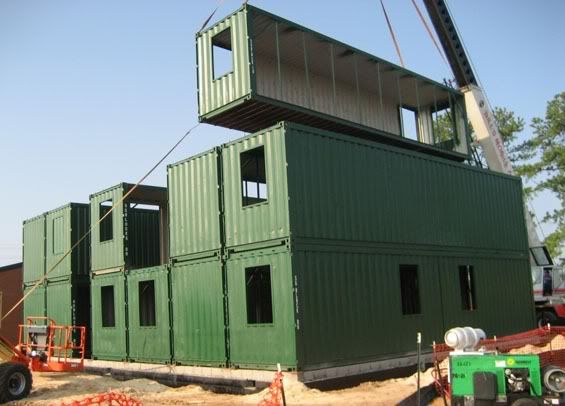
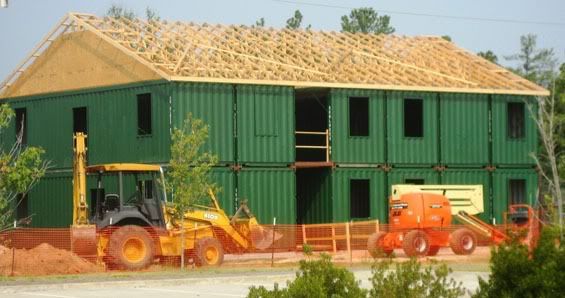
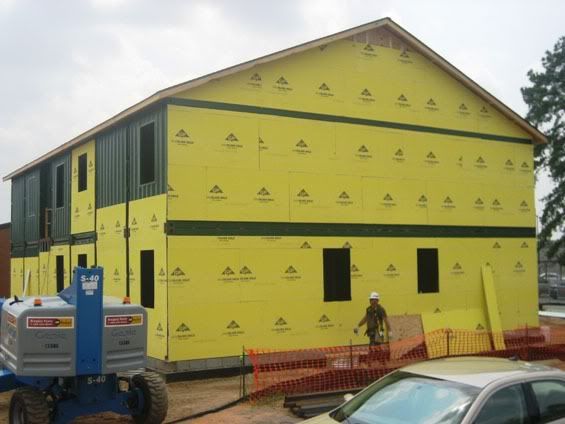
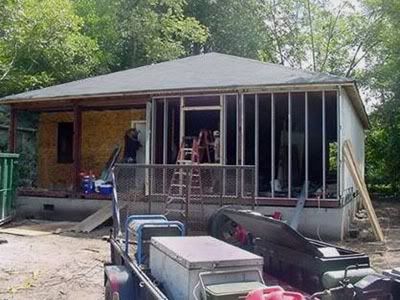
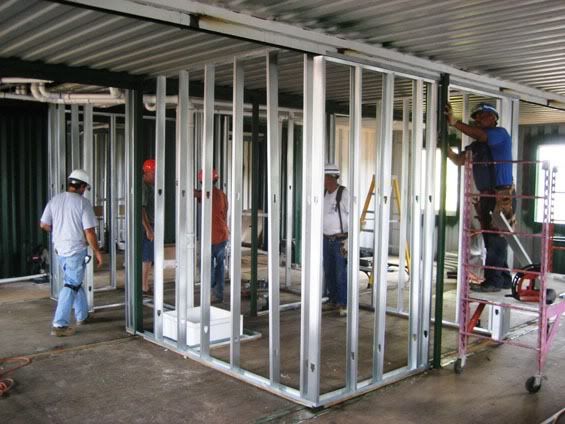

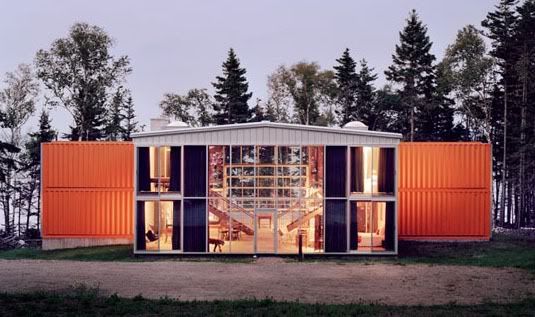
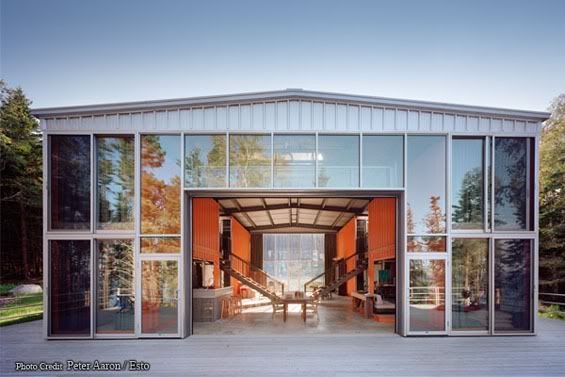
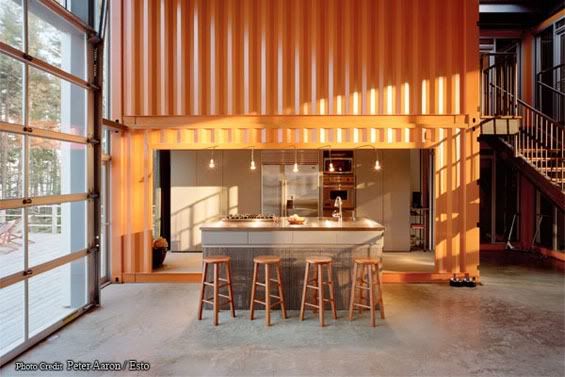
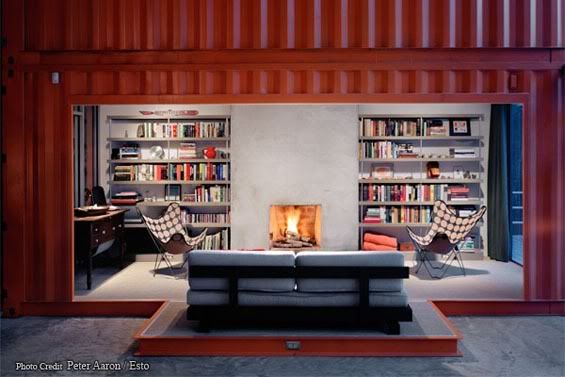
Twenty-one thousand containers hit American shores every day of the year. Containers can be shipped to the interior of the country via trains and trucks. Shipping containers are like Lego toys and the modules can be assembled in thousands of ways.

Shipping Container Getaway!
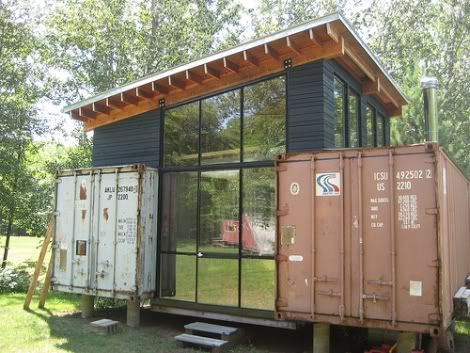
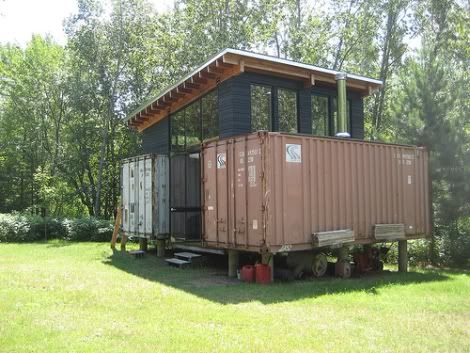
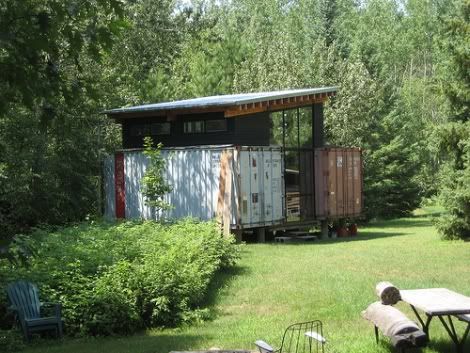
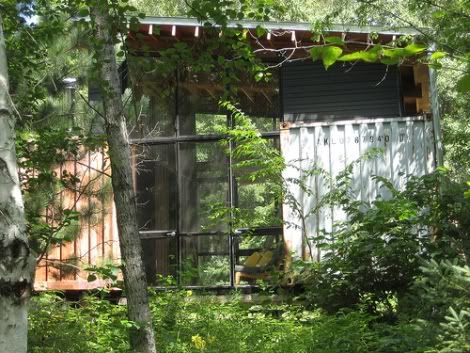


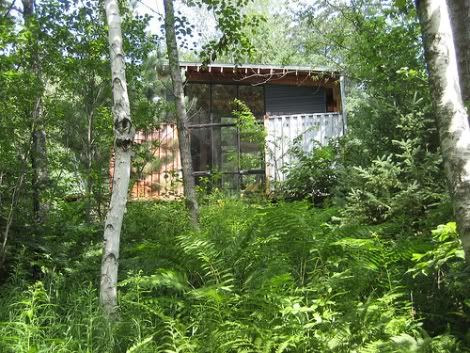
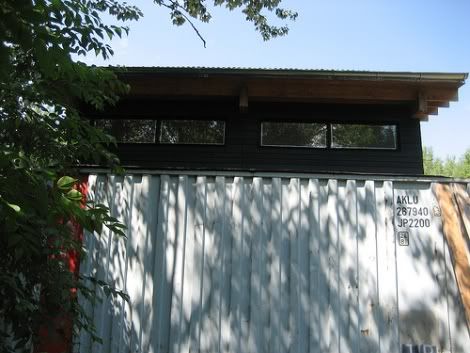
A Cafe in a Shipping Container
It logically follows that if there are computing centers in shipping containers, there should also be some kind of caffeine dispensers in shipping containers as well. Here come artist Adam Kalkin and fancy-pants coffee vendor Illy to the rescue:
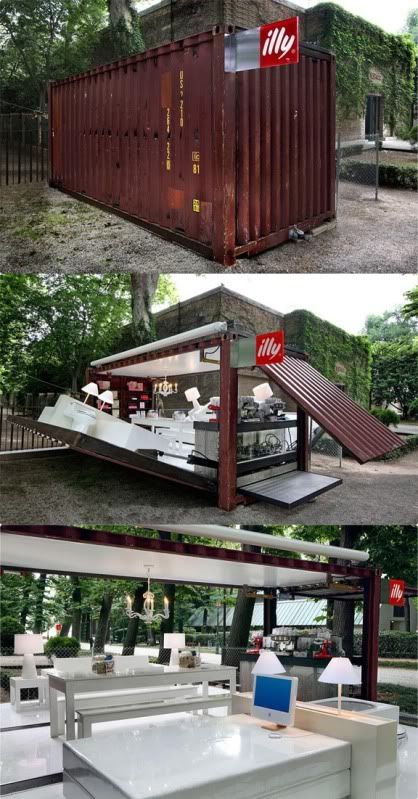
Enterprise Computing in a Box

If you’ve ever watch ships loading and unloading, you’ll know that nobody handles cargo containers gingerly. A shipping container full of computer equipment would have to be able to withstand a fair bit of abuse, and it looks as though the Blackbox container can take it — here’s a video of one in a simulated earthquake of a 6.7 magnitude on the Richter scale:
Sun’s not the only company working the the concept. Google have patented a similar idea. One major difference is that while Sun’s container-based datacenter would be a self-contained computing cluster, Google would treat their containers as very large rackmounts, where a container could operate on its own or as part of a cluster of other computing containers. Robert Cringely has some interesting speculation on the way Google might use these datacenters.
by Global Nerdy
About Us
Our Background
The firm was founded by Lt. Col. George W. Runkle USAFR (Ret.). Mr. Runkle has over 27 years experience in the US military and has served in many locations in the world, from Mc Guire AFB, NJ to LSA Anaconda in Iraq. He retired from the Air Force Reserves in 2005 after three separate tours to the Mideast after 9/11. He has extensive experience with facility design, structural repairs, and timber design. He first worked with buildings made from intermodal shipping containers in 2002 in Uzbekistan.
What We Bring To The Table
Extensive experience in design and construction. We have worked on both sides, which gives us a "real world" feel for our design work.
Experience in very difficult projects in adverse situations. We can develop solutions for issues that are not your standard text book problems.
We have experience in design in the US, the Middle East, Africa, and Central Asia, giving us a worldwide perspective.


